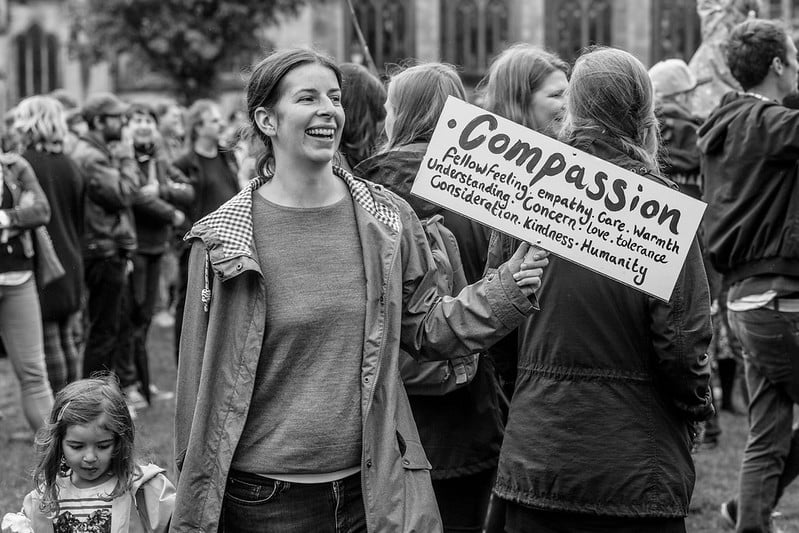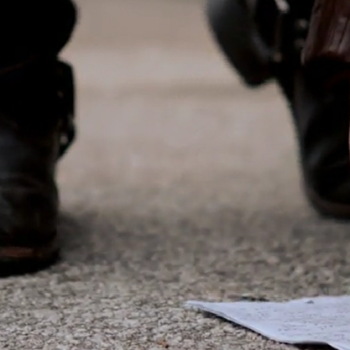Pro-lifers have been losing the abortion debate. Though Roe v. Wade was overturned, more Americans now support abortion than ever.
Right-to-life activist John Gerardi proposes a different approach in his article (behind a paywall) How Pro-Lifers Can Overcome Their Messaging Challenge.
He observes that the major argument against abortion has been the humanity of the child in the womb. Pro-lifers have marshaled the abundant and growing scientific evidence that the “fetus” is a biological distinct and functioning human being. That’s important information that many people do not realize. But to a big slice of the public, that does not matter!
According to a Pew study that Gerardi does not cite, one third of the Americans who agree with abortion (33%) also agree that “human life begins at conception, so a fetus is a person with rights”!
The predominant case for abortion, on the other hand, is an appeal to compassion. Gerardi writes,
Both at the level of public policy and for an individual woman facing a challenging pregnancy, the debate as it stands today centers far more on the burdens of pregnancy. Most people are accepting of abortion if they deem that the burdens a woman faces are weighty enough. Certainly Americans have their limits: They don’t like late-term abortions, and they are uncomfortable with public funding of abortion. But most, wanting to be compassionate when they see a young woman struggling, think of abortion as a compassionate choice.
But, says Gerardi, the “’alleviating burdens’ paradigm is a crooked framework through which to view these questions.” He cites ethicist Judith Jarvis Thomson’s “violinist analogy,” which sets forth a scenario of someone’s vital organs being hooked up to keep a world-class violinist alive. The person hooked up may appreciate the humanity and the value of the violinist, while still deciding to detach the tubes. The donor has no moral obligation to keep the stranger alive. “His life does not outweigh the burdens he unfairly imposes.” Therefore, the mother has no moral obligation to keep the stranger alive, human or not, who is inhabiting her body and using her organs against her will.
But this argument and its many variations that we can hear from the pro-abortion side is bogus:
The argument hinges on various flawed assumptions, but chief among them is that unborn children are strangers to us and that the burdens they represent are unfairly imposed. The unborn are not strangers to their mothers. Nor are they strangers to their communities, and the burdens they impose are not unfair.
Pro-lifers are the ones who should be appealing to compassion! Gerardi cites the book by Notre Dame ethicist Carter Snead, What Does It Mean to Be Human?: The Case for the Body in Public Bioethics, which argues that “debates about abortion and other bioethics questions should be reshaped around respect for human vulnerability and mutual dependence.”
We need to stir compassion for the vulnerability of the child, to be sure. One would think that would be easy in the woke climate that claims to champion the “marginalized” who are victimized by those who exercise power over them. Can there be a better description of what happens in abortion? That’s my comment, not Gerardi’s. He also encourages compassion for the mother.
He cites a statistic that every pro-lifer should bring up at every opportunity: Nearly 70% of the women who have had abortions did not want to, but felt forced into it because of finances, lack of partner support, or outright coercion! So much for “pro-choice”!
The research that Gerardi links to came to these conclusions:
- 67% of women described their abortions as “accepted but inconsistent with their values and preferences” (43%) or “unwanted or coerced” (24%).
- Only 33% identified their abortions as wanted.
- 60% would have preferred to give birth if they had received either more emotional support or had more financial security.
Gerardi tells about the case of someone in his organization counseling a young woman who had decided to get an abortion. She said that she didn’t have any money, her partner wouldn’t support her, and her mother would be devastated if she knew about the pregnancy. Finally, the young woman was persuaded to call her mom. To her surprise, her mother was overcome with joy at becoming a grandmother! She promised to take care of the finances and whatever else her daughter needed. The abortion was canceled, doubtlessly to the relief of the young woman, who was reconciled both to her unborn child and to her own mother.
Comments Gerardi,
This woman’s whole life took a 180-degree turn because of one person committing to love her.
I ask: Was it compassionate to offer that woman an abortion? No — it was the easy way out. It would have addressed none of this woman’s underlying problems: risky behavior with an uncommitted partner, lack of community, deteriorating family connections, lack of financial support and access to health care, etc. Genuine compassion was what her mother showed: a willingness to respond to natural obligations to love and care. So often the difference between an abortion and choosing life is simply whether there is a community of love and support — even if that “community” consists of one person — that enables a woman to choose life.
This is a message for families, churches, and the state–all of those estates that we’ve been blogging about this week!
If two-thirds of women (67%) who get abortions didn’t want to, and almost as many (60%) would not have had one if they had “more emotional support” and “financial security,” most abortions can be prevented.
“The pro-life cause faces an uphill battle, but it is not impossible,” concludes Girardi. “Intelligent and effective messaging, strategy, funding, and policies can enable us to recapture the ‘compassion’ high ground.”
Photo: Compassion by Matt Gibson via Flickr, CC BY-NC 2.0














